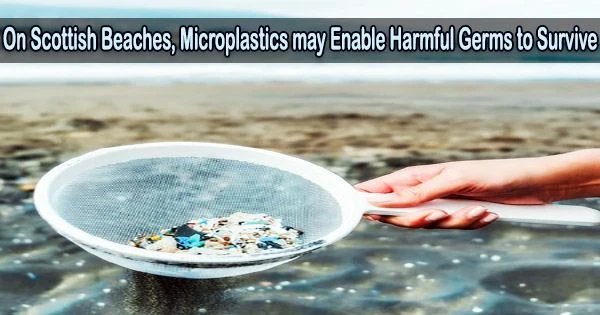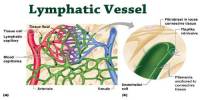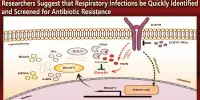Microplastics are tiny plastic particles, typically smaller than 5 millimeters, that come from a variety of sources such as plastic bottles, bags, and packaging materials that break down over time. They can also be generated by the fragmentation of larger plastic items due to exposure to sunlight, wind, and water.
Microplastics are found in a wide range of environments, including oceans, rivers, and even the air we breathe. It has been understood for some time that microplastics provide a protective environment (the so-called “plastisphere”) in which bacteria can survive in wastewater.
The University of Stirling in Scotland has documented for the first time how that can allow germs to endure the trip to the sea and arrive at our beaches, where they can come into touch with people.
Lead researcher Rebecca Metcalf, supervised by Professor Richard Quilliam, subjected microplastics colonized by bacteria in wastewater to the different environments that they would likely pass through on their way to our beaches. Metcalf and her team found that not only could bacteria such as E. coli survive the entire journey, but that viable bacteria also survived for 7 days on the sand.
“The plastic is providing a substrate for transferring pathogens from wastewater, and through river water, estuary and seawater, and finally up onto the beaches where they are much more likely to come into contact with humans,” explains Metcalf. “Other surfaces where bacteria colonize, such as seaweed, wouldn’t necessarily go through that transfer route.”
We hope that our research will add to the growing overarching evidence and support for increasing public awareness and ultimately pushes towards legislative changes for plastic discharge to the environment.
Rebecca Metcalf
Concerned by their findings, Metcalf wanted to see if this theoretical survival was happening on real beaches in Scotland. They collected polyethene and polystyrene plastic waste from 10 Scottish beaches and screened them for 7 target bacteria that cause disease in humans.
Alarmingly, they discovered that these bacteria were present in almost all of the samples, with some of them displaying antibiotic resistance. This is worrying in light of sewage leaks and wastewater overflows onto our beaches.
“We already have sewage ending up in the environment that contains harmful bacteria. But the plastics are transporting bacteria into places where they are more likely to come into contact with people,” says Metcalf.
“We hope that our research will add to the growing overarching evidence and support for increasing public awareness and ultimately pushes towards legislative changes for plastic discharge to the environment.”
The possibility that these bacteria would cause disease in humans is uncertain, so more research is needed to fully understand the possible risk that this may pose to beachgoers in Britain. Researchers continue to caution the public about plastic pollution but emphasize how crucial it is to remove waste from our beaches.
“Don’t be afraid of taking part in a beach clean; it is vital that we remove the plastics from our beaches and dispose of them correctly, but I would encourage the public to wash their hands or use gloves.”
















